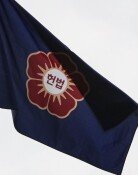‘Additional inter-Korean industrial complexes should be developed,’ says LH
‘Additional inter-Korean industrial complexes should be developed,’ says LH
Posted July. 24, 2018 07:31,
Updated July. 24, 2018 07:31
Once inter-Korean relations improve, South Korea should embark on establishing additional industrial complexes such as the one in Kaesong, according to a recent report published by a research institute under the country’s public enterprise. As a candidate for another industrial complex, the report mentioned North Korea’s capital Pyongyang; Nampo, a seaport in South Pyongan Province; Sinuiju, a city close to China; and Rason, the location of a special economic zone. The report even considered a measure to build a “South Korean-style new town” in the North after forming an organization to oversee the land development of the two Koreas once inter-Korean relations reach the level of a “union.”
Park Hong-keun, lawmaker of the Democratic Party of Korea, revealed Monday the report named “The analysis of detailed status of North Korea’s construction infrastructure compared to South-North development cooperation and participation strategies” published by the Land & Housing Institute under the Korea Land and Housing Corporation. The report estimated that the additional construction of three more industrial complexes, each of which is the size of the Kaesong Industrial Complex, in North Korea will boost the country’s economy by more than 10 percent of its GDP.
The report stressed that if the two Koreas engage in economic cooperation in a full-fledged manner, they should also push for the development of an industrial complex again. In particular, it suggested that the South and North first consider developing North Korea’s west coast regions such as Nampo, Pyongyang, and Sinuiju, given various factors including the supply of workforce, connection with the outside world, and the supply of electric power.
Yet, Rason was pointed out as a candidate despite being in the eastern coast of the country, North Hamgyong Province, because it was designated as the first special economic zone of North Korea in 1991 and thus was well-located for multilateral cooperation with China and Russia.
The institute also chose 11 regions out of North Korea’s special economic zones and economic development zones where it sees the two Koreas can jointly develop construction infrastructure. Kaesong and Rason, which have already seen a considerable amount of development, have been excluded, while Hwanggumpyong Island and Wihwa Island among special economic zones, and Hyesan, Manpo, and Amrok River region out of economic development zones were mentioned in the report.
Jae-Myung Park jmpark@donga.com
Headline News
- Med professors announce intention to leave hospitals starting Thursday
- Bridge honoring Sgt. Moon Jae-sik unveiled in Pennsylvania
- Chief of Staff Chung tells presidential secretaries to stay away from politics
- US FTC bans noncompete agreements
- N. Korea launches cyberattacks on S. Korea's defense companies







